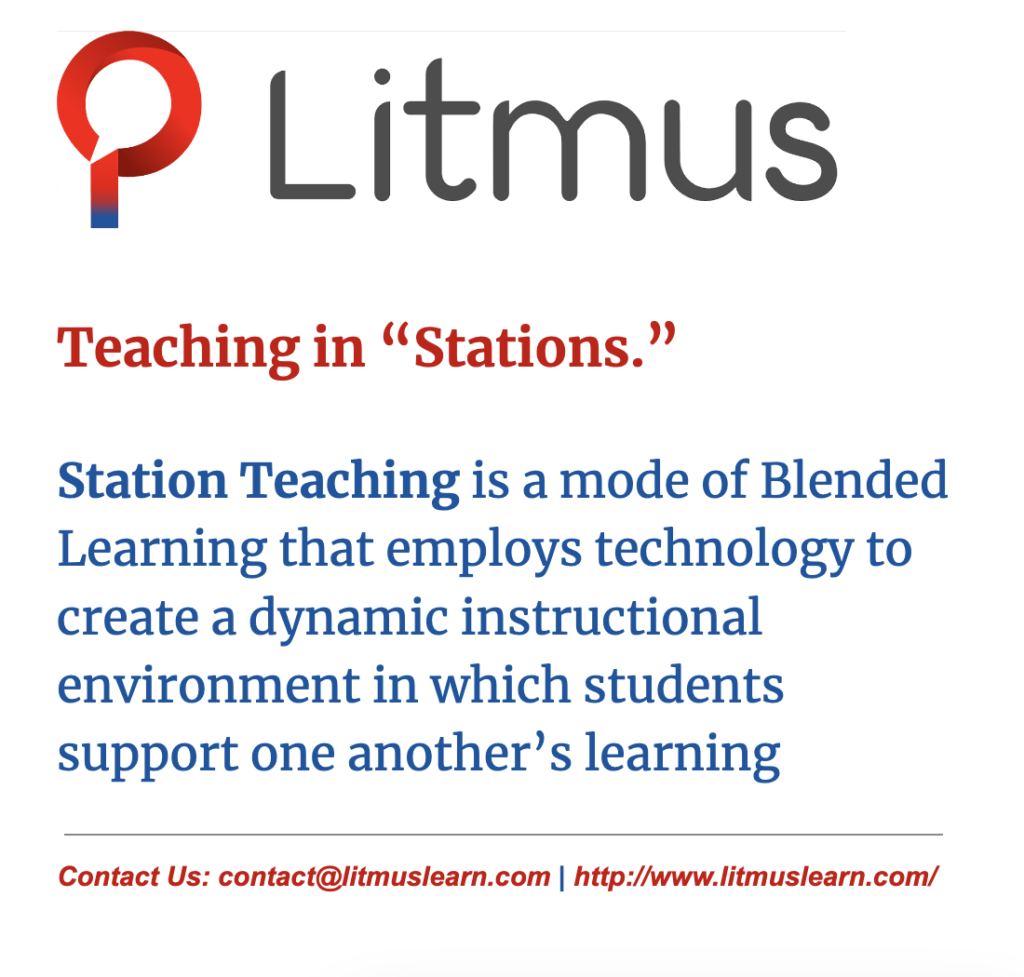Station Teaching is a mode of Blended Learning that employs technology to create a dynamic instructional environment in which students support one another’s learning. It’s a powerful pedagogical model based on deep research into how students can help each other develop critical thinking skills, build knowledge, and actively take ownership of their learning.
In its simplest form, teaching in stations means that the teacher creates small groups of students who engage in learning activities together. Rather than a whole class instruction lead by the teacher, station teaching means that several different instructional methods are being used simultaneously.
The most powerful aspect of this form of teaching is a called “the zone of proximal development.” Developed by psychologist Lev Vygotsky, the zone of proximal development is that sweet spot in which students use what they already know and are able to do to reach that next level of learning, often with the help of another student. The social dynamic created by this model of instruction means that students are incentivized to work together to help one another reach mastery, and to share ideas for the benefit of the group.
How can technology facilitate teaching in stations?
Because blended learning leverages technology for efficient assigning, assessing, and analyzing student work, it is ideal for the teaching in stations model of instruction. Students can use individual devices or a single device for a small group of students to engage in tasks planned and pushed out to them by their teacher.
Rather than having to be in several places at once, the teacher can multiply their instruction by creating a series of learning activities for students to cycle through during the class period. These activities are designed to foster conversations, problem solving skills and critical thinking.
How can Litmus Learn help?
Litmus is a fully integrated platform that allows teachers to turn one set of content into several highly engaging learning activities for students. Once the teacher creates questions, discussion prompts, or uploads or links a video from YouTube, they can then use that material over several of Litmus’s tools.
During blended learning station, each station could be focused around a single activity designed around a common lesson topic. For example, if you wanted to teach about the water cycle for a science class, one station might ask students to engage with an interactive video, while another would have an illustrated simulation, a third would use digital flash cards, and a fourth would be a Confidence Assessment.
At the end of the class, the teacher would have access to all of the results, both individually by students and as a whole group. That data would help the teacher plan how to proceed- where students might need remediation, and where they are ready for the next lesson topic.


